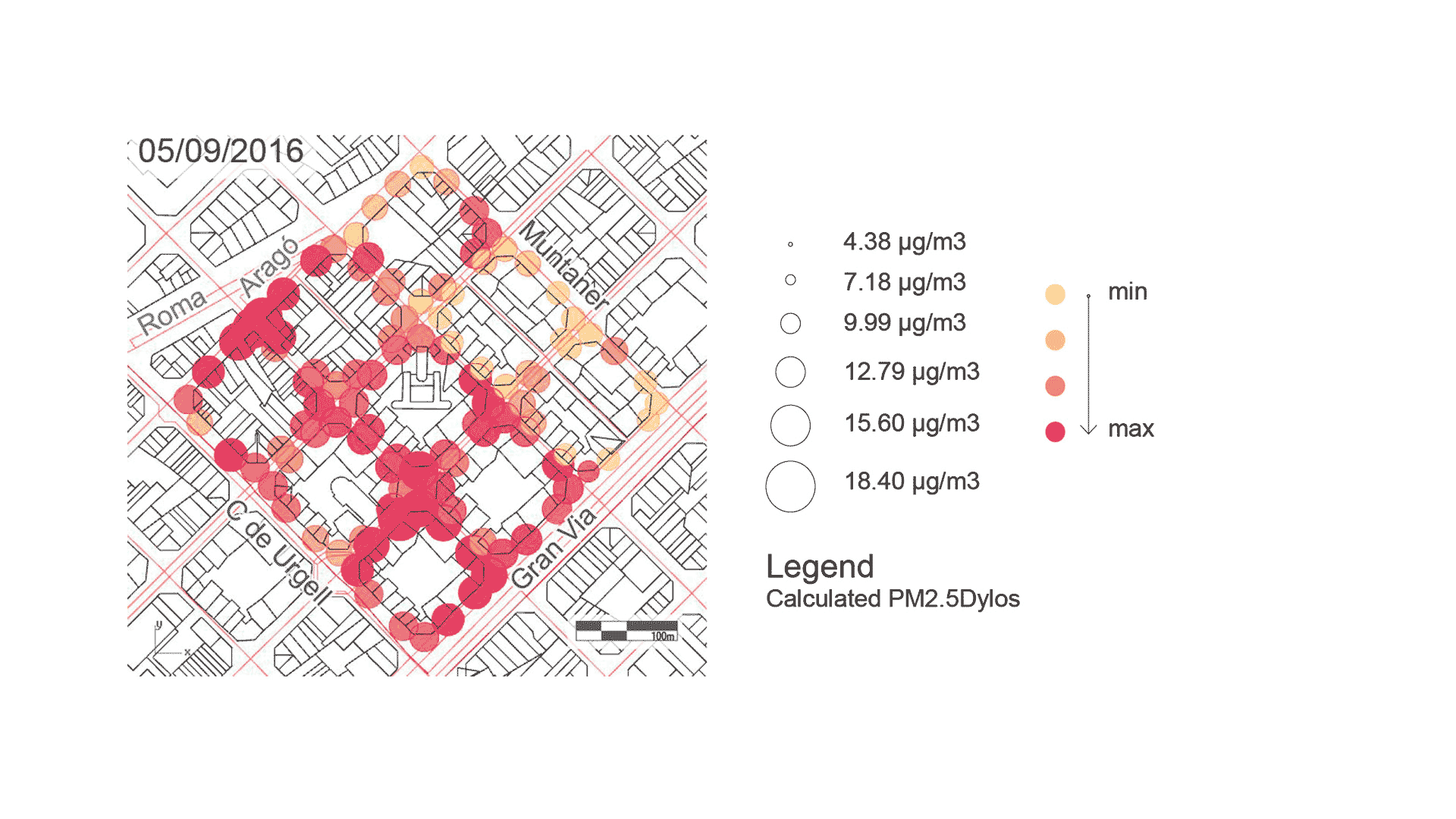Air Pollution
Low-cost mobile sensors to evaluate air quality within and between intra-urban areas in Barcelona, Spain and Portland, Oregon, USA
Philip Speranza, Master of Architecture,1
Marc Viader, Master of Architecture, M.S in Robotics,2
María Cruz Minguillón, Doctor of Philosphy,3
Xavier Querol, Doctor of Philosphy,4
1 Urban Design & Computing Lab (UD&CL), 321 Mill Street, 97401, Eugene, Oregon, USA ; University of Oregon, LawrenceHall 485, Eugene, Oregon, USA
2 Urban Design & Computing Lab (UD&CL), Carrer Freixa 26-28, Baixos 3ª, 08021 Barcelona, Spain
3 Institute of Environmental Assessment and Water Research (IDAEA), CSIC, Jordi Girona 18-26, 08034 Barcelona, Spain
4 Institute of Environmental Assessment and Water Research (IDAEA), CSIC, Jordi Girona 18-26, 08034 Barcelona, Spain
Abstract
Intra-urban variation of ambient air particulate matter (PM) concentrations was evaluated in Barcelona, Spain and Portland, Oregon, USA. Measurements were carried out using Dylos 1700-based mobile instruments, providing real-time particle number concentrations between 0.5 and 2.5 µm. The Dylos sensor was calibrated in real-world conditions at a urban monitoring site in Barcelona, using an optical particle counter, previously corrected with gravimetrically-determined PM2.5 concentrations, as the reference instrumentation. Measurement campaigns were carried out in Barcelona’s Eixample area (in spring and summer 2016), Barcelona’s Poblenou area (in summer 2016) and in Portland’s Pearl NW Pearl district (in summer 2014 and 2016). Each test area included 71 to 200 sidewalk locations, separated by 33m, in approximately 400 m squared neighborhood areas.
Correlations between PM measurements performed with the low-cost handheld sensor instrumentation corrected with the reference instrumentation. Then, observations during data collection recorded relationships between human phenomena and meteorology with urban design characteristics. Lastly spatial patterns visualized the highest relative PM concentrations not at streets with the more traffic lanes such as Gran Via Av in Barcelona or West Burnside in Portland but narrower interior streets. While an accepted major source of PM is road traffic (vehicle exhaust, brake and tire materials), the research seeks to validate a protocol that relates PM concentrations with small-scale variations in street width, tree canopy enclosure, and orientation to prevailing wind as well as observed urban phenomena during data collection. These characteristics are important to measure physical and transit differences within and between Barcelona’s newly planned three-by-three block areas called Superilles and the possible adaptation of mitigation strategies to enhance healthy urban living.
Keywords: air quality, particulate matter, urban areas, low cost sensors












